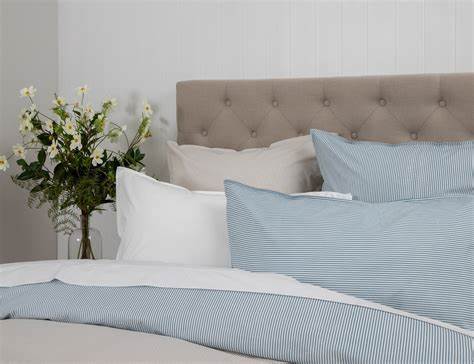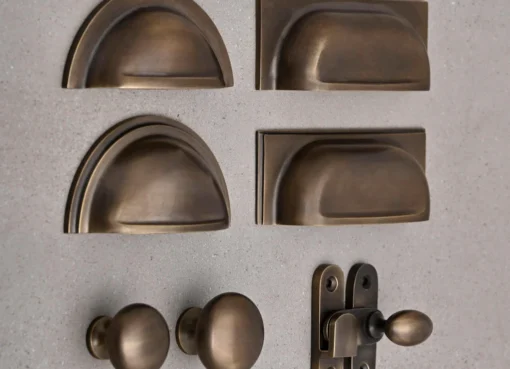What Makes the Best Bed Linen for a Restful Sleep?

Quality sleep is essential for overall well-being, and the choice of bed linen can significantly impact the quality of rest one receives. The best bed linen goes beyond mere aesthetics; it encompasses a combination of factors that contribute to comfort, breathability, durability, and overall sleep experience. In this comprehensive guide, we delve into the characteristics that define the best bed linen for a restful sleep, helping you make informed decisions when selecting your bedding.
· Material Matters:
The type of material used in bed linen plays a crucial role in determining its comfort and breathability. Cotton is widely regarded as one of the best materials for bed linen due to its softness, durability, and breathability. Egyptian cotton, in particular, is prized for its long fibers, which result in a smoother and more luxurious fabric. Pima cotton, also known as Supima, is another high-quality cotton variety renowned for its softness and durability.
Additionally, linen is a popular choice for bed linen, especially for those seeking a natural and breathable option. Linen fabric is derived from the flax plant and is valued for its moisture-wicking properties, making it ideal for hot sleepers or humid climates. While linen may feel slightly rougher compared to cotton initially, it softens over time with each wash, offering unparalleled comfort and a relaxed, lived-in feel.
For those with sensitive skin or allergies, organic cotton or bamboo-derived fabrics may be preferable options. Organic cotton is grown without the use of pesticides or synthetic fertilizers, making it a safer and more eco-friendly choice. Bamboo-derived fabrics, such as bamboo lyocell or bamboo viscose, are prized for their silky smooth texture, moisture-wicking properties, and antimicrobial qualities, making them suitable for individuals with skin sensitivities or allergies.
· Thread Count and Weave:
Thread count refers to the number of threads woven into one square inch of fabric and is often used as a measure of a sheet’s quality. While a higher thread count may indicate a denser weave and smoother texture, it is not the sole determinant of quality. In fact, excessively high thread counts (above 800) may be misleading and do not necessarily translate to better quality or comfort.
Instead of focusing solely on thread count, consider the weave of the fabric, which can significantly affect its feel and breathability. Percale weave, characterized by a tight, one-over-one-under weave, results in a crisp and cool fabric ideal for warmer climates or hot sleepers. Sateen weave, on the other hand, features a three-over-one-under weave, resulting in a smoother and slightly lustrous surface with a softer feel.
Ultimately, the best bed linen strikes a balance between thread count and weave, offering a combination of comfort, breathability, and durability. Opt for a thread count between 200 and 800, coupled with a weave that suits your personal preferences and sleep environment.
· Finishing Touches:
The finishing touches of bed linen, such as hemstitching, piping, or embroidery, can add a touch of elegance and refinement to your bedding ensemble. Hemstitching, characterized by small, decorative stitches along the edges of the fabric, not only enhances the aesthetic appeal but also reinforces the seams for added durability.
Piping, also known as corded edges, involves sewing a narrow strip of fabric along the edges of the sheets or pillowcases, creating a tailored and finished look. Similarly, embroidery or embellishments can add intricate patterns or designs to your bed linen, elevating its visual appeal and creating a sense of luxury.
When selecting bed linen, pay attention to the quality of the finishing touches, ensuring that they are well-executed and enhance the overall aesthetics of your bedding ensemble. While these details may seem minor, they can contribute to the overall comfort and enjoyment of your sleep experience.
· Care and Maintenance:
Lastly, proper care and maintenance are essential for prolonging the life of your bed linen and preserving its quality and appearance. Follow the manufacturer’s care instructions, which typically involve washing your bed linen in cold water with a mild detergent, avoiding harsh chemicals or bleach that can weaken the fibers.
To maintain the softness and durability of your bed linen, avoid overloading the washing machine and opt for a gentle cycle with a slow spin speed. Additionally, tumble drying on a low heat setting or line drying in the shade can help prevent shrinkage and preserve the integrity of the fabric.
Regularly rotate your bed linen to distribute wear and tear evenly and consider investing in multiple sets to prolong the lifespan of each set. With proper care and maintenance, the best bed linen can provide years of comfort, ensuring restful sleep night after night.
In conclusion, the best bed linen for a restful sleep combines quality materials, thoughtful craftsmanship, and proper care and maintenance. Whether you prefer the softness of cotton, the breathability of linen, or the eco-friendly properties of bamboo-derived fabrics, prioritizes comfort, durability, and personal preference when selecting your bedding. By considering factors such as material, thread count, weave, finishing touches, and care instructions, you can create a luxurious and inviting sleep environment that promotes relaxation and rejuvenation.


